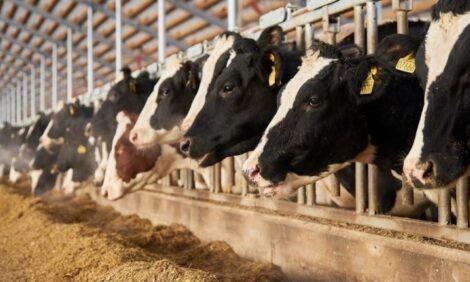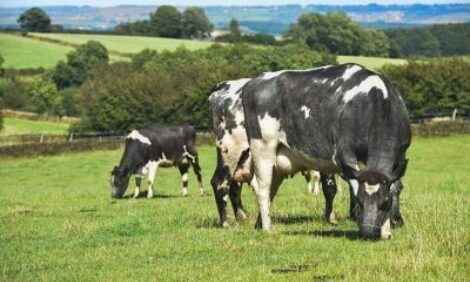



Birth To Weaning Management: Long Term Health Of Dairy Steers
Understanding the highly negative impact of calves receiving insufficient quantities of high quality colostrum at birth is the most important management decision affecting profitability of feeding Holstein steers, writes Frank Wardynski, Extension Dairy Educator.Dairy producers can aid in producing vigorous calves by ensuring calves receive adequate quantities of high quality colostrum. Producers that develop a reputation for doing so should receive higher prices for healthy calves.
Feeding dairy steers from birth to weaning can result in highly variable profits. A positive profit margin becomes increasingly difficult to attain as feed prices increase.
As a result, the value of dairy steer calves can be highly variable. Also, the sale of dairy steer calves frequently totals only one per cent of gross sales on a dairy operation. It becomes understandable that dairy steer calves may not receive top priority from management and labour in dairy operations.
Feeding adequate quantities of high quality colostrum shortly after birth to newborn calves is critical to achieving passive immunoglobulin (Ig) transfer from dam to calf. The transfer of Ig from dam to calf through the colostrum is important for calf health during the first 2 months of age.
Dr Sam Leadley, Calf and Heifer Specialist with Attica Veterinarian Associates, presented his recommendations to Optimising Newborn Calf Health Management at the 2011 Great Lakes Regional Dairy Conference:
- Cows should be vaccinated with scours vaccines to ensure colostrum antibodies will be present for immunity transfer.
- Care should be taken to reduce manure buildup on cows and mater- nity areas should be kept clean to reduce risk of contaminating new- born calves with manure from mature cows. Reducing exposure to manure from mature cows greatly reduces mortality and morbidity.
- Colostrum should be harvested within 2 hr of birth. Delay of co- lostrum collection reduces Ig concentration in the colostrum. As compared with 2 hr post-calving collection of colostrum, Ig con- centration decreased by 17, 27 and 33 per cent at 6, 10 and 14 hr post calving collection, respectively.
- Colostrum also should be kept clean and cooled immediately if not fed directly. Bacterial growth in colostrum increases exponentially if not cooled to 40o F soon after milking.
- Ideally, newborn calves should receive 4 quarts of high quality co- lostrum within the first few hours of birth. Calves should be encouraged to suckle from a bottle as much of the four quarts as possible and then use an esophageal tube feeder to administer the remaining colostrum.
- Producers are encouraged to set a goal to feed 80 per cent of calves within 4 hr of birth with 4 quarts of colostrum.
If these management practices are followed, high rates of Ig transfer to the calf should occur and will help to ensure healthy vigorous calves. Immunoglobulin G represents 90 per cent of all Ig transferred to calves. Immunoglobulin G concentrations in blood serum greater than 10mg/ml indicate adequate Ig transfer.
Calves with serum concentrations less than 10mg/ml are at greater risk of diseases such as scours and pneumonia and exhibit mortality rates twice those of calves receiving IgG transfer greater than 10mg/ml.



